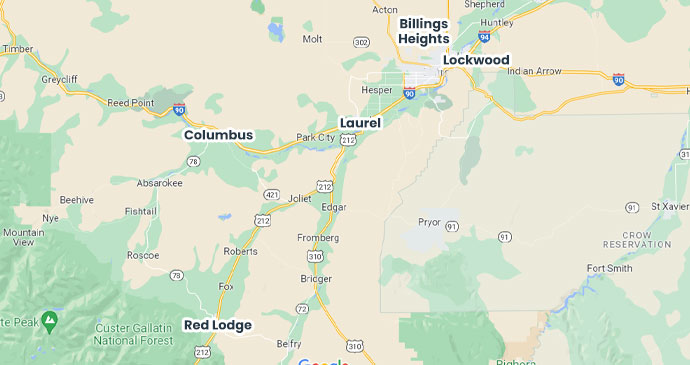"Luckily I have never needed to use a restoration company, but as someone who has worked closely with Alpha Omega, they have treated my clients very well, and have always been honest and very transparent. Although their whole team is very professional and punctual, Carissa and Sonya have been great to work with."
The Difference Between a Flood Watch, Warning, and Advisory
Spring is a glorious time in south-central Montana. Clear days and warmer temperatures are a welcome change following a chilly winter. But one unpleasant result of the sunny days is rapid snowmelt, causing water to run off already saturated ground and ushering in the peak flood season in the Billings area.
Although spring is when most regional flooding occurs, that doesn’t mean flooding isn’t a year-round concern. A damaging deluge can occur anytime, causing major destruction to your business or home.
A sudden rush of water can wreck buildings, move boulders, rip trees out of the ground, and wash out bridges. Standing flood waters also often contain dangerous chemicals and spread infectious diseases.
So when the weather forecasters mention floods, how do you know what to expect? It can get very confusing to decode the different terms. What is a flood watch versus a flood warning or advisory? And how does a flash flood differ? Read on for some clarification!

Flood Watch
According to the National Weather Service, a flood watch means that conditions are favorable and flooding is possible. The main takeaway for a flood watch is to stay informed, begin preparations, and act if necessary. That should include the creation of a plan for where to go if water begins to rise.
Flood Warning
The National Weather Service will issue a flood warning when hazardous weather is imminent or already happening. At this point, you must act to prevent injury or property damage. In the event of a flood warning, seek safe shelter right away. Don’t walk, swim, or drive through floodwaters. Six inches of moving water can knock you down and one foot of moving water can carry your vehicle away. In addition, evacuate if you’re told to do so.
Flood Advisory
The National Weather Service issues flood advisories when flooding that is not considered a significant threat to life or property is expected or is occurring. It usually refers to instances when flooding causes nuisances, such as overflow problems in low-lying areas and areas of poor drainage, as well as minor flooding of streets. Flood advisories signal water flow that is considered more of an inconvenience than a significant threat to life and property.
Flash Flood
A flash flood occurs within six hours — and often within as little as three hours — of a major downpour, after a dam or levee breaks, or in the case of mudslides. Flash floods are the most dangerous and destructive of all floods because of the incredible speed by which they move and the intense destruction they can leave behind. The rapid onset of flash floods means they catch most people off-guard with little time to prepare.
These deadly torrents occur in every U.S. state along rivers, on coastlines, in urban areas, and even in dry creek beds and at every time of year. The National Weather Service issues a flash flood warning when one is in progress or is imminent.
Should You Purchase Flood Insurance?
Whether or not you live in a FEMA flood hazard zone, you should seriously consider purchasing flood insurance for your home. Here in the Billings West End, Billings Heights, Laurel, Red Lodge areas, rainfall has increased over the last two decades. This precipitation has led to major devastation to residential and commercial structures. Standard homeowners’ policies do not cover flood damage, and only five inches of water can cause up to $25,000 in damages to your home or business.
What Should You Do if Your Property Has Been Impacted by Flooding?
In the event of catastrophic flooding damage to your home or business, make sure to practice extreme caution when re-entering your property. There are numerous hidden perils when you enter a water-damaged property, including electrocution, hazardous materials, contaminants, mold, and sewage. If a building is not structurally sound, it can collapse on top of you. The best way to guard against these risks is to hire a company that specializes in flood damage restoration. In addition to assessing your property before you enter, disaster restoration contractors will know exactly how to proceed to make your home livable again or to allow you to restart your business operations.
Alpha Omega Disaster Restoration has served home and business owners in the Billings area for 15 years. We employ industry experts who serve as trusted advisors to our clients, allowing us to go above and beyond to produce high-quality emergency and reconstruction services.













